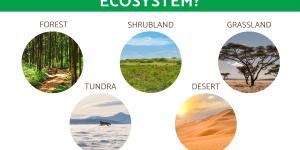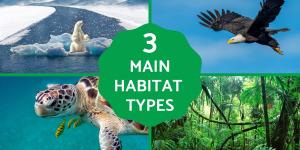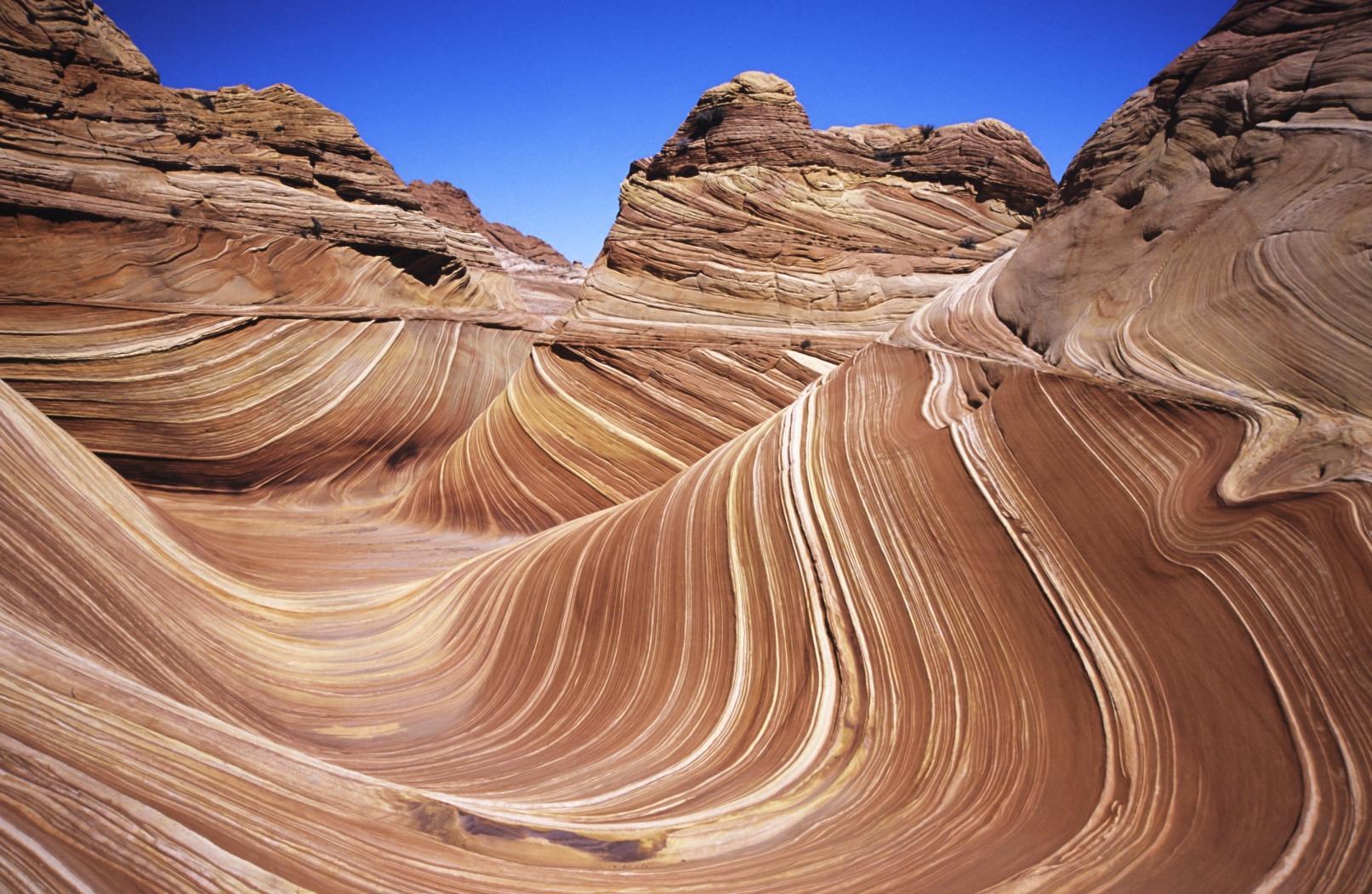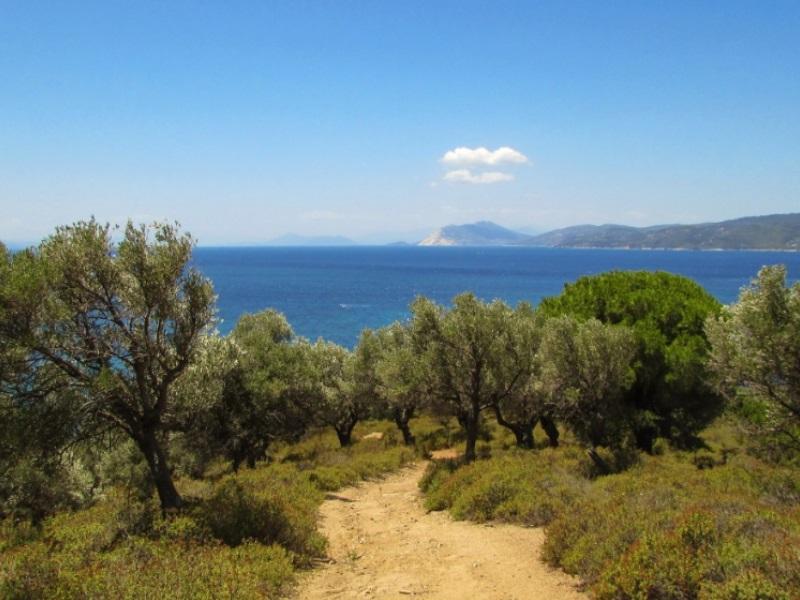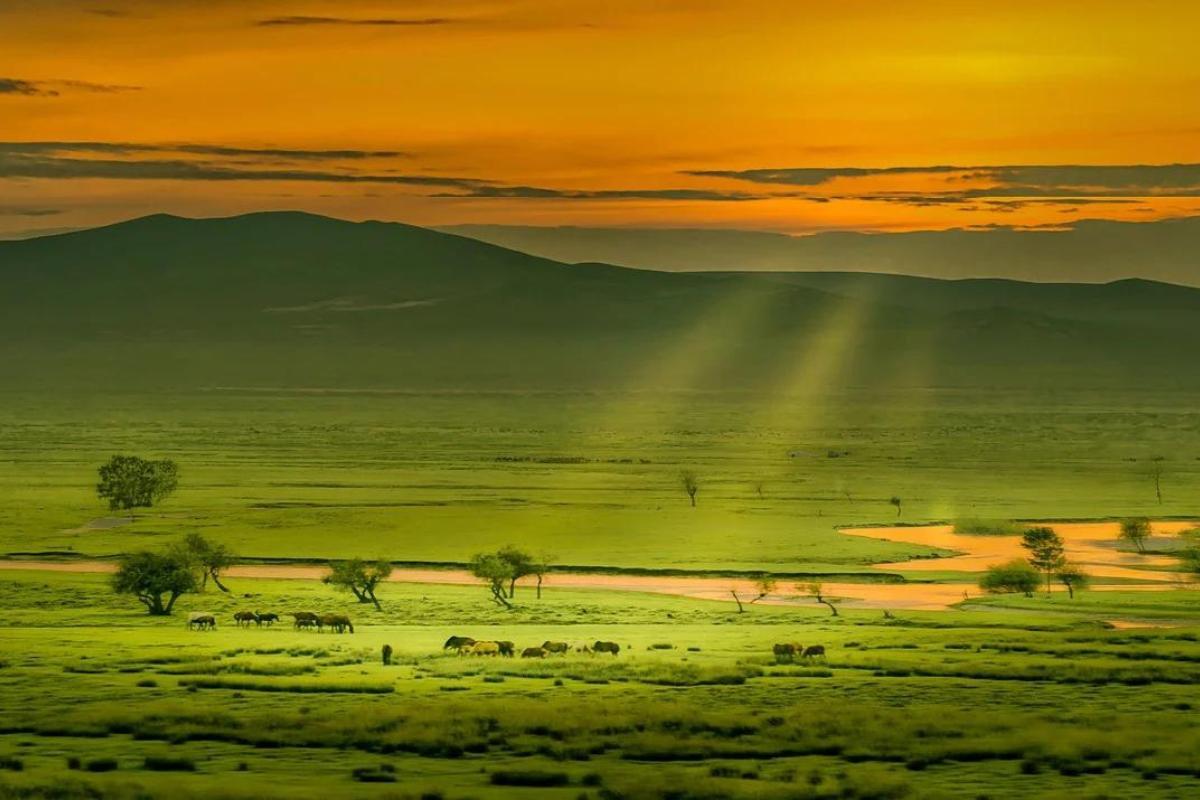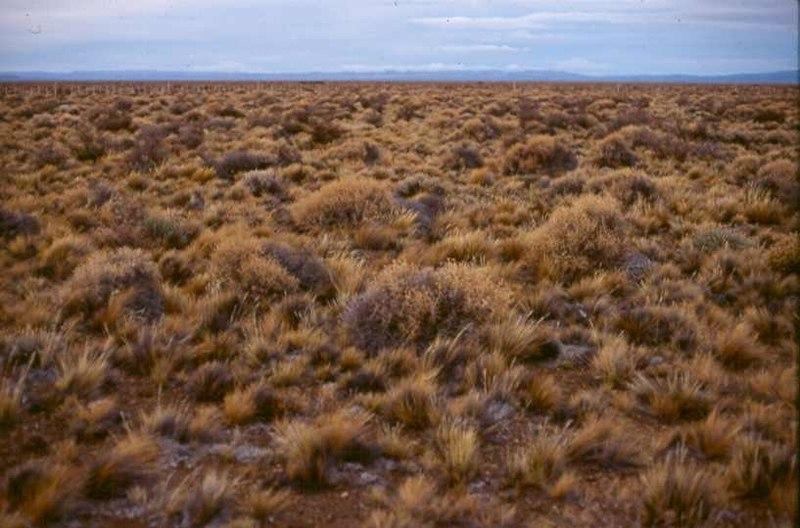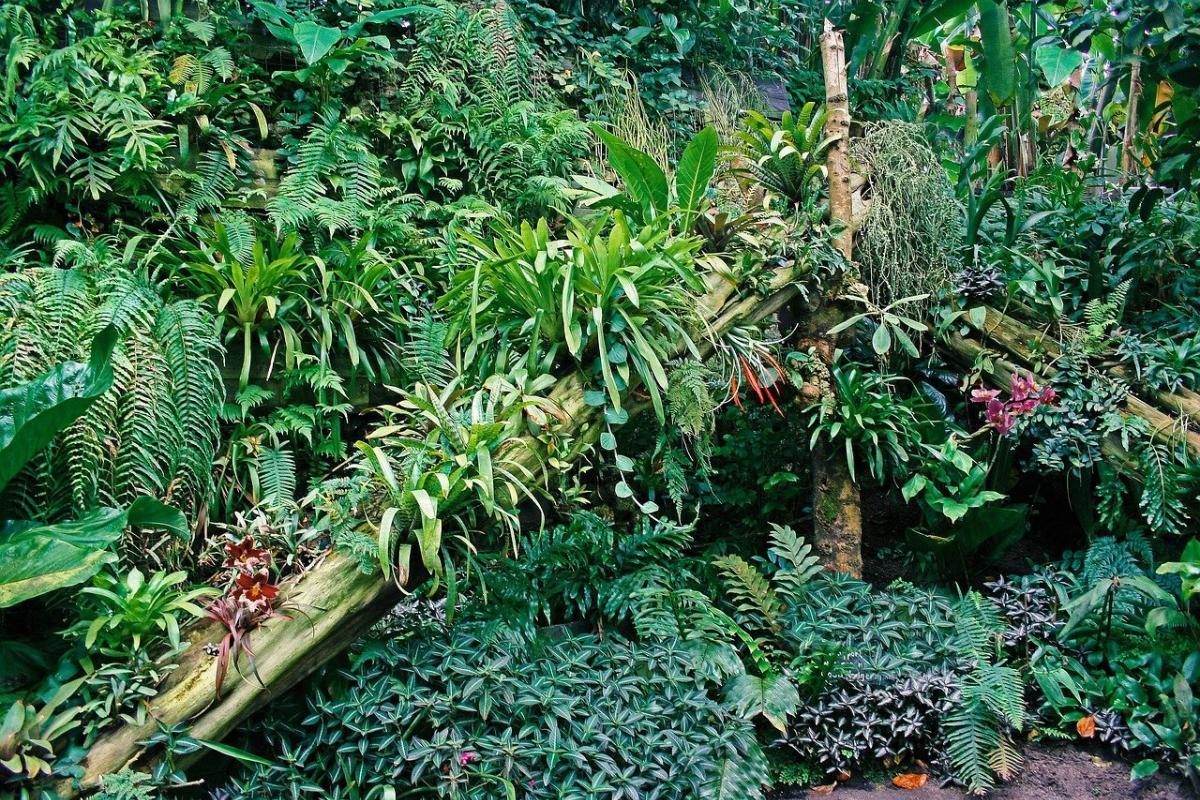Types of Terrestrial Biomes on Earth


A biome is a large-scale ecosystem that is characterized by its unique climate, vegetation, and wildlife. Biomes are classified based on their temperature, precipitation, latitude, altitude, plant structure, leaf types, spatial distribution of plants, and ecological succession. From the lush rainforests of the Amazon to the frozen tundra of the Arctic, each biome is a testament to the diversity of life on Earth.
In this article by thedailyECO, we will explore the eight major terrestrial biomes and their unique characteristics.
- What is a biome?
- Characteristics of terrestrial biomes
- Temperate forest
- Desert
- Mediterranean
- Grassland
- Chaparral
- Tropical rainforest
- Boreal forest
- Tundra
What is a biome?
A biome is a large, distinct biological community characterized by specific types of plants, animals, and climate patterns. Biomes are defined by their unique combination of climate, temperature, precipitation, and vegetation. These factors influence the types of organisms that can thrive in a particular region.
The term "biome" was coined in the early 20th century and has its origins in the field of ecology and biology. It is derived from two Greek words, Bio, meaning life and Ome, meaning a large, significant community or system.
Characteristics of terrestrial biomes
Now that we understand what a biome is, let's dive into the key characteristics of terrestrial biomes. Terrestrial biomes are classified based on their temperature, precipitation, latitude, altitude, plant structure, leaf types, spatial distribution of plants, and ecological succession.
- Temperature and precipitation are two of the most important factors in determining the type of biome. Biomes with high temperatures and precipitation are typically humid, while biomes with low temperatures and precipitation are typically arid.
- Latitude and altitude also play a role in determining the type of biome. Biomes closer to the equator are typically warmer and more humid, while biomes at higher altitudes are typically colder and drier.
- Plant structure refers to the type of plants that are found in a biome. Biomes with trees are typically called forests, while biomes with shrubs are typically called shrublands. Biomes with grasses and other herbaceous plants are typically called grasslands.
- Leaf types also vary depending on the biome. Biomes with broad-leaved plants are typically found in humid areas, while biomes with needle-shaped leaves are typically found in dry areas.
- The spatial distribution of plants refers to how densely packed or dispersed the plants are in a biome. Biomes with densely packed plants are typically called closed-canopy forests, while biomes with more dispersed plants are typically called open-canopy forests.
Ecological succession is the process by which plant communities change over time. The climax vegetation is the final stage of ecological succession, and it is the plant community that is best adapted to the environmental conditions of the biome.
Temperate forest
Temperate forests are one of the terrestrial biomes characterized by moderate climates with distinct seasons. You can find temperate forests in various parts of the world, including eastern North America, western and Central Europe, eastern Asia, and parts of South America and Australia.
These forests are found in regions with four distinct seasons: spring, summer, autumn, and winter. The climate of temperate forests is characterized by moderate temperatures and precipitation. Temperatures typically range from 40 to 70 degrees Fahrenheit (4 to 21 degrees Celsius) in the summer and 20 to 40 degrees Fahrenheit (-7 to 4 degrees Celsius) in the winter. Precipitation typically ranges from 20 to 60 inches (508 to 1524 millimeters) per year.
Temperate forests are known for their diverse tree species, including deciduous trees like oaks, maples, beeches, and birches. In addition to trees, you'll find various shrubs, herbs, and ferns in the understory. Temperate forests are also home to a wide variety of animals, including mammals, birds, reptiles, amphibians, and insects.
The soils in temperate forests tend to be fertile and well-suited for agriculture, which has led to significant human land use.
If you're curious about the plants and animals that live in temperate forests, be sure to check out this informative article.

Desert
Deserts are dry environments with little rainfall. They are characterized by sparse vegetation and a high rate of evaporation. Deserts are also notable for their high rates of water evaporation and the consequent challenge of retaining moisture. Additionally, persistent wind and minimal vegetation contribute to ongoing soil erosion.
Desert biomes can be found on every continent except Antarctica, and they cover about 33% of the Earth's land surface.
There are different types of desert, which are classified based on their temperature and precipitation:
- Hot deserts: these deserts, like the Sahara Desert in Africa or the Arabian Desert, are characterized by high temperatures during the day, often exceeding 100°F (37.8°C). They typically have low humidity and minimal vegetation.
- Cold deserts: cold deserts, such as the Gobi Desert in Asia or the Great Basin Desert in North America, experience extreme temperature variations between day and night. Winters can be quite cold, and they often receive snowfall.
- Coastal deserts: located along coastlines, coastal deserts like the Atacama Desert in Chile have milder temperatures due to their proximity to the ocean. They may still be arid but receive some moisture from sea breezes.
- Rain shadow deserts: these deserts form on the leeward side of mountain ranges, where the mountains block moisture from reaching the area. The Mojave Desert in the United States is an example.
- Semi-arid deserts: these regions, like parts of Australia's Outback, receive slightly more rainfall than true deserts but still have limited vegetation and are prone to drought.
The sparse plant life in deserts demonstrates remarkable adaptations to their harsh surroundings. These adaptations include deep-reaching root systems for accessing water and the ability to store water in their tissues, as seen in plants like cacti.
Desert animals have evolved various adaptations to cope with arid conditions. Many are nocturnal to avoid daytime heat, while others are efficient in their water use, obtaining moisture from their food or having specialized kidneys. Some animals are heat-tolerant and seek shade during extreme temperatures, while burrowing is a common strategy for escaping both heat and predators.
Deserts are some of the most fascinating ecosystems on Earth, but they can also be some of the most hostile. To learn more about the different types of deserts and the plants and animals that live in them, check out this article.

Mediterranean
Mediterranean forests, woodlands, and scrublands, commonly known as Mediterranean biomes, are terrestrial ecosystems characterized by a unique combination of climate, vegetation, and geographical features. Mediterranean biomes are typically characterized by a Mediterranean climate, which includes hot, dry summers and mild, wet winters.
The climate is influenced by the Mediterranean Sea, which helps regulate temperatures. Average temperatures in Mediterranean climates range from 70 to 85 degrees Fahrenheit (21 to 29 degrees Celsius) in the summer and 45 to 60 degrees Fahrenheit (7 to 16 degrees Celsius) in the winter. Average precipitation in Mediterranean climates ranges from 15 to 30 inches (381 to 762 millimeters) per year. Most of the precipitation falls during the winter months.
Vegetation in Mediterranean biomes is adapted to the seasonal climate patterns. Common plant species include evergreen shrubs, cork oak trees, olive trees, and various drought-resistant plants. The plants in this biome often have small, waxy leaves to reduce water loss and are well-suited to fire-prone conditions.

Grassland
Grasslands, often referred to as prairies, are terrestrial biomes defined by a remarkable diversity in average temperatures, a characteristic that profoundly influences their unique ecosystems.
These biomes predominantly feature herbaceous vegetation, particularly grasses, and may include scattered shrubs and trees in some cases. There are different types of grasslands based on climate and location:
- Prairies in mountainous areas: these are typically found in alpine or mountainous regions, where temperatures tend to be cooler.
- Prairies in temperate regions: these grasslands are common in temperate and semiarid climates and are often associated with the classic image of vast grassy plains.
- Grasslands with tropical shrublands: these can be located in tropical and subtropical regions, where they may feature a mix of grasses and shrubs.
Grasslands typically receive moderate to low amounts of rainfall, which is a key factor contributing to the dominance of grasses over trees and shrubs. Precipitation levels can vary among different types of grasslands, with some being more arid than others.
Grasslands can experience dramatic seasonal changes in temperature and precipitation. Some may have distinct wet and dry seasons, impacting the growth and survival of plant and animal species.
Both plants and animals in grasslands have evolved specific adaptations to cope with the challenges of this environment, such as drought tolerance, efficient grazing strategies, and burrowing behaviors.

Chaparral
Chaparral is a type of shrubland biome characterized by hot, dry summers and mild, wet winters. It is found in coastal areas of California, Mexico, Chile, and the Mediterranean region.
Chaparral regions typically experience a Mediterranean climate, characterized by hot, dry summers and mild, wet winters. These climates are known for their distinct wet and dry seasons, with most of the rainfall occurring during the cooler months. Temperatures typically range from 75 to 95 degrees Fahrenheit (24 to 35 degrees Celsius) in the summer and 45 to 60 degrees Fahrenheit (7 to 16 degrees Celsius) in the winter. Precipitation typically ranges from 15 to 30 inches (381 to 762 millimeters) per year, and most of it falls during the winter months.
Chaparral is home to a variety of drought-tolerant shrubs, as well as some trees, grasses, and wildflowers.
Chaparral shrubs are typically dense and evergreen, with thick, leathery leaves. This helps them to retain moisture during the dry summer months. Chaparral trees, on the other hand, are typically small and spindly, with sparse leaves. This helps them to reduce water loss. Chaparral grasses and wildflowers are typically annual, meaning that they germinate, grow, flower, and die within a single year. This allows them to take advantage of the short growing season in the chaparral biome.
Chaparral ecosystems are well-adapted to periodic wildfires. Many plant species have developed fire-resistant adaptations, such as hardy root systems, fire-resistant seeds, and the ability to resprout after a fire. Fire plays a crucial role in maintaining the health and diversity of chaparral habitats.

Tropical rainforest
Tropical rainforests, found in regions like South America, Asia, Africa, and Oceania, are known for their hot and humid climates with consistent rainfall. These rainforests can be further classified based on their specific characteristics and locations.
Tropical forests typically have temperatures ranging from 21 to 32 degrees Celsius (70 to 90 degrees Fahrenheit). Furthermore, tropical forests typically receive more than 2,500 millimeters of precipitation per year.
One remarkable aspect of tropical rainforests is their rich vegetation. These biomes feature towering trees with sturdy trunks that create a dense canopy, limiting sunlight penetration to the forest floor.
They are found near the equator and cover about 6% of the Earth's land surface. Tropical forests have the highest biodiversity of any biome on Earth.
The plants in these regions have unique adaptations, including buttress roots for stability, large leaves to capture sunlight, and epiphytic plants that grow on tree branches.
Forests are essential to life on Earth, but they can also be very diverse. To learn more about the different types of forests and the plants and animals that live in them, check out this informative article.

Boreal forest
The taiga, also known as boreal forests, represents one of the Earth's largest terrestrial biomes. It covers extensive regions (17% of the land surface) in the Northern Hemisphere, especially in North America, Europe, and Asia. I
It is characterized by its cold and harsh climate, with long, frigid winters and relatively short summers. The taiga has a cold climate with short, cool summers and long, cold winters. Temperatures typically range from -20 to 60 degrees Fahrenheit (-29 to 16 degrees Celsius). Precipitation is typically low, ranging from 10 to 30 inches per year.
In the taiga biome, coniferous trees such as pine, spruce, and fir dominate the landscape. These trees have evolved to withstand the extreme cold and typically retain their needle-like leaves throughout the year. The forest floor is often covered in a thick carpet of mosses and lichens.
The taiga is home to a variety of wildlife, including iconic species like moose, wolves, bears, and numerous bird species. Many of these animals have adapted to the challenging climate, growing thick fur or feathers to insulate themselves from the cold.
This biome is notable for its vital role in the global carbon cycle, as its extensive forests store large amounts of carbon dioxide, helping to mitigate climate change.

Tundra
The tundra biome is one of the Earth's harshest and coldest environments, characterized by its extreme cold, strong winds, and a lack of trees. It can be found in the Arctic, Antarctic, and alpine regions of various continents. Temperatures typically range from -60 to 50 degrees Fahrenheit (-51 to 10 degrees Celsius). Precipitation is typically low, ranging from 10 to 30 inches per year.
Tundra landscapes are vast, often appearing as treeless plains or low, rolling hills. The soil is typically frozen, a condition known as permafrost, which restricts the growth of trees and many plants. Instead, tundras are home to hardy, low-lying vegetation like mosses, lichens, and small shrubs.
Animal life in the tundra has adapted to the severe conditions. Species such as reindeer, Arctic foxes, lemmings, and polar bears have developed unique features like thick fur, hibernation, and specialized diets to survive in this challenging environment. Many bird species also migrate to tundras during the breeding season, taking advantage of the extended daylight hours.
Polar ecosystems are essential to the health of the planet, but they are also under threat from climate change. To learn more about these important ecosystems and what we can do to protect them, be sure to read this other article.

If you want to read similar articles to Types of Terrestrial Biomes on Earth, we recommend you visit our Ecosystems category.
- Valladares, F. (2004) Ecology of the Mediterranean forest in a changing world. Ministry of the Environment, EGR AF. Chapter XV, pp: 425-460.
- Terradas, J. (2001). Vegetation Ecology. Omega Editions, Barcelona .
- Altesor, A. (2003) The prairie biome. Terrestrial Ecology Section, Faculty of Sciences, UDELAR .
- Odum, EP (1984) Ecology. Library of the Faculty of Agronomy and Zootechnics, National University of Tucumán, Argentina .

